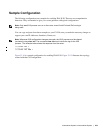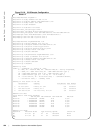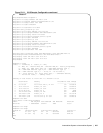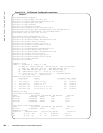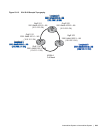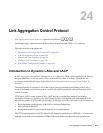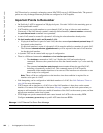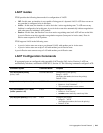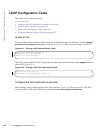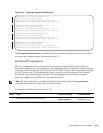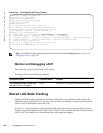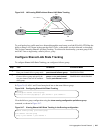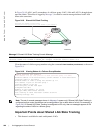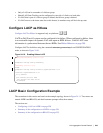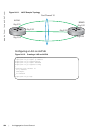
Link Aggregation Control Protocol | 543
LACP modes
FTOS provides the following three modes for configuration of LACP:
• Off—In this state, an interface is not capable of being part of a dynamic LAG. LACP does not run on
any port that is configured to be in this state.
• Active—In this state, the interface is said to be in the “active negotiating state.” LACP runs on any
link that is configured to be in this state. A port in Active state also automatically initiates negotiations
with other ports by initiating LACP packets.
• Passive—In this state, the interface is not in an active negotiating state, but LACP will run on the link.
A port in Passive state also responds to negotiation requests (from ports in Active state). Ports in
Passive state respond to LACP packets.
FTOS supports LAGs in the following cases:
• A port in Active state can set up a port channel (LAG) with another port in Active state.
• A port in Active state can set up a LAG with another port in Passive state.
A port in Passive state cannot set up a LAG with another port in Passive state.
LACP Configuration Commands
If aggregated ports are configured with compatible LACP modes (Off, Active, Passive), LACP can
automatically link them, as defined in IEEE 802.3, Section 43. The following commands configure LACP:
Command Syntax Command Mode Purpose
[no] lacp system-priority
priority-value
CONFIGURATION Configure the system priority.
Range: 1– 65535
(the higher the number, the lower the priority)
Default: 32768
[no] port-channel-protocol lacp INTERFACE Enable or disable LACP on any LAN port:
• Default is “LACP disabled”
• This command creates a new context.
[no] port-channel number mode
[active | passive | off]
LACP Configure LACP mode.
• Default is “LACP active”
• number cannot statically contain any links
[no] lacp port-priority priority-value LACP Configure port priority.
• Ranges: 1 – 65535
(the higher the number, the lower the priority)
• Default: 32768



